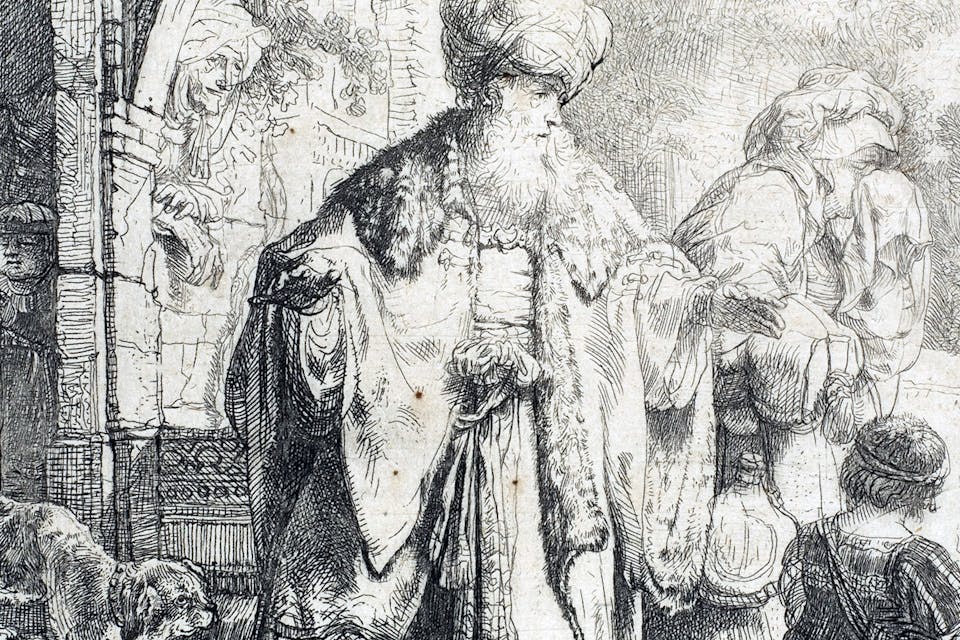
September 7, 2018
Rembrandt and What it Means to be Both a Stranger and a Neighbor in the World
In his rendering of the banishment of Ishmael, the Torah reading for Rosh Hashanah, Rembrandt reminds us of the bond between Jews and humanity at large.
For Rembrandt enthusiasts, few experiences are as exciting as visiting the great artist’s home in Amsterdam. Bought in the flush of youthful success, it was later relinquished when Rembrandt found himself on the brink of bankruptcy; the building is thus an emblem both of his earthly ups and downs and of his enduring fame.
Today the home functions as a museum. The art displayed in the former living room and bedroom is largely the work not of Rembrandt but of other, mainly contemporary Dutch artists. One painting, by Jan Pynas, is The Expulsion of Hagar, a subject of much interest to artists in Holland; a version of the same scene created by Rembrandt’s own teacher, Pieter Lastman, hangs in the Kunsthalle in Vienna.
The story depicted by these artists is told in Genesis 21, in a passage read publicly in synagogues all over the world on the first day of Rosh Hashanah. Following the miraculous birth of her son Isaac, the elderly Sarah has decided that Abraham’s firstborn child Ishmael must be expelled from the household with his mother Hagar. Abraham is aghast, but is ordered by the Almighty to comply: